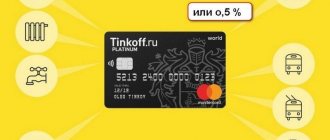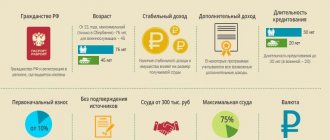What do banks offer?
Typically, lending organizations give three options if you want to pay off your mortgage quickly and sell your home .
- Repay the loan in full. It is clear that not everyone is able to shell out a large amount of money at once.
- Transfer the debt to a third party. This approach is fraught with difficulties: firstly, it is necessary to find such a third party, and secondly, the banks themselves are often against it, because such a development worsens the quality of the loan to the Central Bank.
- Replacement of collateral. Equal to apartment exchange. We'll talk more about this option.
The procedure for exchanging an apartment with a mortgage
Unlike the traditional sale of real estate, during an exchange an exchange agreement is concluded between individuals, and the cost of housing is not converted into monetary terms. Such a transaction has 3 participants, where the third party is the lender, who controls the transfer of the mortgage encumbrance from the old apartment to the new one.
The mortgage real estate exchange operation includes the following stages:
- The borrower contacts the bank to draw up an application for exchange of living space. The creditor considers the client's request and makes a decision regarding the possibility of further procedure.
- If there is permission from the bank, the client collects a package of documents on the selected property, on the basis of which responsible specialists check the liquidity of the potential collateral. At this stage, the bank may refuse to carry out an exchange if it turns out that the new housing does not meet its requirements or has any encumbrances.
- An exchange agreement is concluded between the owners of the property, which specifies the method of conducting the transaction (with or without additional payment). The borrower must notify the other party that the property is under a mortgage.
- An encumbrance is placed on the new apartment, and it becomes collateral for the bank.
- All lender restrictions are removed from the property that previously belonged to the borrower.
Only after following the established procedure can the second party to the transaction legally re-register the ownership of the apartment that was previously under mortgage.
Is it possible to exchange mortgaged housing for another?
Yes, you can exchange mortgaged real estate, but subject to certain conditions.
What do you need to know?
Banks dictate conditions under which you can exchange housing only for a real apartment . This point is worth keeping in mind for families hoping to move into a home under construction. The lender must evaluate the new loan facility.
Please note: the borrower pays for the appraisal.
When exchanging housing, you must provide a package of documents identical to those required for a mortgage agreement. The list is quite extensive, here are just some of the most important:
- application form for obtaining a loan;
- passport;
- a copy of the work book;
- SNILS, documents for housing;
- marriage certificate or divorce certificate;
- children's birth certificates.
The list may expand or narrow depending on the requirements of the lending organization.
Additionally, banks require an application to increase the size of the mortgage by an amount equal to the difference between the old and new home (if any). Often, the borrower is required to pay a down payment on a new home.
Options
The simple option is not even a classic exchange as such. First, you need to sell the mortgaged apartment and use the proceeds to buy a new home. We will talk about it at the end of the article.
A complex option involves the simultaneous conclusion of two sales and purchase agreements between the bank and the borrower and between the borrower and the real estate seller. In this case, pay attention to the following things:
- take official confirmation from the bank that it does not object to the exchange of the apartment;
- the apartment that the borrower sells will legally still be pledged to the bank;
- after registering the borrower’s ownership of the new property, it becomes collateral to the credit institution;
- the bank agrees to remove the encumbrance from the sold apartment, and the new owner gets the opportunity to undergo state registration of ownership.
How to obtain the bank's consent?
Since the property is pledged to a credit institution, you need to obtain its consent . This is stated in Article 37 of Federal Law No. 102-FZ “On Mortgage”. For everything to happen without delay, a significant part of the mortgage loan must already be repaid without delay. As a rule, 4-5 years of regular payments are sufficient.
An advantage will be the cost of new real estate, which should be less than or equal to the mortgaged property, and the high liquidity of the purchased housing.
Then the borrower must submit a written request to the bank, indicating that he needs permission to exchange mortgage housing. A package of documents is attached to the application:
- passport (original and copy);
- passport and written consent of the co-borrower (if available);
- marriage certificate (if available), spouse’s consent to the exchange;
- copy of personal account;
- extract from the house register;
- documents confirming the timeliness of payments.
How to exchange for a home?
The procedure for exchanging real estate is established by Chapter 31 of the Civil Code of Russia. When exchanging an apartment for a house, it is proposed to either find an equivalent property, or an unequal one with a subsequent surcharge. The cost of housing is determined by an appraisal , which is paid by the borrower.
The purchase and sale agreement will indicate not only information about the house, but also the characteristics of the land plot. It is also necessary to indicate the land plot in the transfer and acceptance certificate.
Important: All accompanying documents must be clean, and the land plot should preferably have no encumbrances. If they exist, they are specified in the contract.
Cost difference
The main problem that may arise when exchanging a mortgaged apartment for another is the price difference. There are three possible options here:
- Exchange for housing identical in price. This option is the simplest, and therefore preferable for both the bank and the borrower. In this case, the difference in square meters will not matter. That is, in this case, it is actually possible to exchange for a larger housing unit, provided that they have the same price. Or it is acceptable to exchange a one-room apartment for a two-room one.
- Exchange for cheaper housing. This is the most difficult exchange option, because it is not profitable for the lender to receive a less expensive collateral. Agreement can usually only be achieved if the mortgage is almost completely repaid.
- Exchange for more expensive housing. The bank even benefits from such an exchange, since it receives more expensive collateral. If the difference in cost is more than 20%, the lender will almost always approve such an exchange with an additional payment.
Features of the procedure
Procedure steps:
- Obtaining permission from the bank. We discussed this in detail above.
- Finding a buyer and agreeing on the terms of the transaction.
- Deal.
What documents to collect and what to pay attention to?
Equal property
This is the simplest option. To check the safety of the apartment, you need to order extracts from the housing department, USRN, and house management. They are paid by the borrower.
If all documents are in order, the parties begin to conclude an agreement , simultaneously drawing up an exchange agreement, transfer of a new pledge and removal of the encumbrance from the old apartment.
More expensive and larger area
If the bank immediately agrees to a transaction with an additional payment, then the sequence of actions is identical to the exchange for equivalent housing. If the lender refuses, citizens try to sell their mortgaged home while simultaneously applying for a new loan.
Bank approval often follows a simplified procedure: for this it is important to have a clean credit history and good quality new collateral that suits the lender.
When the borrower receives consent for both applications, he draws up two contracts: for the sale of the old one and the purchase of the new one. In this case, the procedure for registering a deposit for new housing is carried out first . The old apartment is still under an encumbrance, which is removed after concluding a new loan agreement.
A private house
In addition to the documents for the house, which are identical to the documents for the apartment, which we discussed above, you will need special papers for the land plot:
- documents confirming ownership of it;
- an extract from the Unified State Register of Real Estate (until 2020, its function was performed by a cadastral passport for land);
- information from the cadastral authority that the plot is not subject to encumbrance.
Conclusion of an agreement
The purchase and sale agreement for the exchange of mortgage housing is drawn up in simple written form. It must contain the following points:
- subject (what kind of living space);
- price and payment procedure (immediately or in parts);
- list of persons registered in the apartment.
If desired, the parties include in the documents the period when the apartment will be empty and transferred , the seller’s obligation to pay for utilities until the date of eviction, etc.
Sometimes the parties enter into an advance agreement if irrefutable proof of payment is required. It would be useful to indicate in the contract that the advance must be returned to the buyer if circumstances are discovered that impede the transaction. Otherwise, the buyer risks losing both money and new housing.
Instead of an advance agreement, it is possible to use a preliminary agreement, which will indicate the firm intentions of the parties.
Registration of a transaction
At the time of the transaction, the buyer must have an amount sufficient to cover the mortgage , which is divided into two parts. The first, equal to the balance of the loan, is sent for full early repayment of the loan. The second is placed in a safe deposit box with certain access conditions. This money is intended for the seller of the new home; it will be transferred after registration.
Important: the buyer will have to obtain a loan from the same bank as the seller’s loan. Exceptions are rare and extremely difficult to document.
After concluding the transaction, it is necessary to submit the entire package of documents from the bank to Rosreestr , where the buyer will be registered as the new owner. This is necessary to remove the burden. After completing this procedure, the buyer receives the housing and the rights to it, and the seller receives the difference between the price of the apartment and the mortgage amount that was pledged to the unit.
In the future, all that remains is to sign the acceptance certificates and celebrate the housewarming.
Options for exchanging a mortgaged apartment for a new one
There are several ways to make an exchange of interest to the borrower.
Option 1. Selling one apartment and buying another
This is where a double purchase and sale agreement is concluded. To do this, follow these steps:
- Pay off the debt in full.
- Remove the encumbrance from the collateral.
- Apply for a new mortgage.
- Find a buyer for housing.
- Conclude a purchase and sale agreement for the previous property.
- Draw up a new loan agreement.
- Conclude a purchase and sale agreement for a new property.
- Register with the State Registration Service.
In this case, the new buyer should not worry about the presence of a deposit on the apartment (in a private house). After all, he is buying “clean” real estate, from which the encumbrance has already been removed.
Option 2. Replacement of collateral
This method can only be used if the value of the two real estate objects is equivalent. Replacement is carried out in the following way:
- Documentation for the new property is provided.
- New housing is being assessed.
- Changes are being made to the terms of the mortgage.
- An exchange agreement is concluded.
- A deposit is issued.
- The encumbrance is removed from the old apartment.
This option is complicated by the fact that the buyer may be hesitant to purchase real estate that is pledged.
Option 3. Attracting a consumer loan for a short period
This is another convenient option to exchange an old apartment for a new one. In this case, you will need to perform the following steps:
- Find a buyer for a mortgaged apartment.
- Take out a short-term consumer loan to close a mortgage.
- Remove the encumbrance from the previous property.
- Conclude a purchase/sale agreement.
- Pay off the previous loan with the proceeds.
- Buy suitable housing.
- Place a burden on her.
Here it should be taken into account that difficulties may arise when obtaining a consumer loan for a large amount. Most banks, for example, may require you to enter into a surety agreement. However, this method is quite convenient, since there is a greater chance of finding a buyer. After all, the apartment will no longer be under the bank’s encumbrance.
Option 4. Exchange by assignment
As an alternative, an exchange by assignment can be used. The scheme is that the mortgaged apartment or the debt on it is assigned to another person. However, this option can only be played out if the new client fully accepts the terms of the existing mortgage. Then the assignment will be recorded in the appropriate agreement. Once it is signed, the borrower status will transfer to the new person.
The advantage of this option is the legal purity of the transaction. In addition, in this case, the new borrower will no longer have to pay the full amount of the debt, but only the remaining part. An additional plus is that he will receive a good credit history.
However, in this case, the bank will carefully evaluate the new client. If he does not meet at least one criterion, then the assignment will be denied to him. However, sometimes it is more profitable for the bank to agree to assign the debt to any candidate. For example, he has no choice when an old borrower is declared insolvent.
Exchange terms
We have already said above that exchanging an apartment with a mortgage is legally possible, but the procedure is regulated by the internal regulations of credit institutions. Accordingly, their conditions may be different.
For example , one bank allows the replacement of collateral when the mortgage is repaid by two-thirds, another gives the opportunity to exchange two or three years after the conclusion of the loan agreement. But there are also general conditions that are the same for everyone.
- The borrower should not have any debt, he has always been a conscientious payer and has not allowed a single delay in payments.
- The remaining balance on the mortgage must not exceed the cost of the new home. The new property must cover the debt with a discount of about 30%, including accrued interest.
- The purchased housing must be located in a region where branches or representative offices of the bank are open, and meet all the requirements of the credit institution.
- The new apartment should not be under construction.
If the borrower does not provide these conditions, then the replacement of the collateral will definitely be refused.
The bank may offer the borrower one of the ways to exchange real estate.
- Concluding an exchange agreement - the encumbrance will be removed from one mortgaged apartment and placed on another. In this case, the borrower receives permission to sell the first apartment and simultaneously purchase the second.
- Applying for a consumer loan to pay off the debt on the first mortgage, after which a new mortgage agreement is concluded.
Documents for this procedure
Photo: https://pixabay.com/photos/writing-notes-pen-hand-paper-933262/
The borrower must provide to the bank:
- passport;
- TIN, SNILS;
- military ID for men of military age;
- documents on marital status, including birth certificates of children;
- consent to the transaction from the second spouse, if they are not bound by a marriage contract;
- information about official employment and income received.
In addition to the required documents, you also need to collect all the necessary papers about the apartment (both old and new).
List of real estate documents:
- title documents;
- technical documentation;
- extract about registered citizens;
- information about the absence of utility debts;
- conclusion of an independent appraiser on the market and liquidation value of both apartments;
- consent of the guardianship authorities if one of the owners is a minor.
A few words about military mortgages

It is easy to see that any option can be resolved by exchange. Without any extra buying and selling. But it happens that the seller of other real estate may not need the apartment that the client took on a mortgage. If the seller only requires cash, then buying and selling is indispensable. In addition, a more expensive or cheaper apartment means a different mortgage size, because the value of the collateral must correspond to the amount that the bank lent. With its change, both the interest rate and the down payment may change. That is why, most often, all transactions with mortgage real estate take place within the framework of a cash equivalent exchange. Another unconsidered case is a military mortgage. Perhaps it will be the most difficult for a client to exchange/sell such real estate. After all, there is a double burden here - banking and Rosvoenipoteka. There is only one permitted early method:
- transfer of service to another location. Usually it's another city. This is provided for in advance in the military mortgage agreement in the “moving” clause. The scheme is similar to that which takes place in an equivalent exchange, only the housing must be near the military’s place of service;
- the second option is obvious - simply level out the mortgage and pay off under the Rosvoenipoteka program.
Finally, it is worth warning that it is not uncommon for a mortgage agreement to specify in advance the conditions for the exchange or sale of collateral. Therefore, you must be careful when signing an agreement. This is one of the main points of the sale of real estate under mortgage encumbrance, which were discussed in this informative article.









